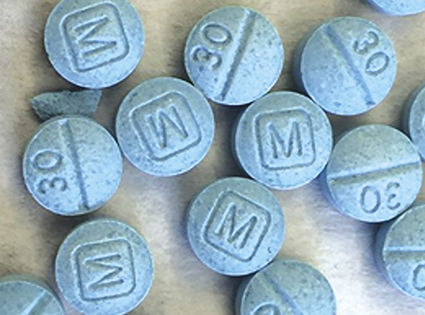Alaska does not Escape the Fentanyl Crisis
On April 12th, during a press conference, Anchorage School District officials reported that five students had overdosed on fentanyl since the beginning of the year. According to an article from Alaska News Source, the students had felt ill during school hours and were saved by trained staff who administered Naloxone. This event raises concerns because it is not happening in isolation; it is part of a national trend that is hitting Alaskans particularly hard. According to Alaska’s public health department, overdose deaths increased by 74% in 2021 alone, with fentanyl deaths spiking by 150%. This is a national problem, with the CDC reporting that 700,000 people died from fentanyl overdoses in 2021, almost four times the number from five years ago.
According to the National Institute for Health Care Management, this increase is linked to the pandemic. During the beginning of lockdown, there was an increase in deaths caused by stimulant drugs such as cocaine, and especially methamphetamines. Fentanyl is often laced with these substances and, due to its potency (50 times stronger than heroin and 100 times stronger than morphine), it is often correlated with deaths. In fact, the same NIHCM study found that in 2020, 49% of deaths involving methamphetamine and 71% of deaths involving cocaine involved a synthetic opioid like fentanyl. Alaska is being hit particularly hard by this crisis. Alaska’s High Intensity Drug Trafficking Area program reported in its annual report that Alaska law enforcement seized nearly 2.5 million doses of fentanyl just last summer. The drug is likely coming from Mexico and has proven devastating for Alaska’s health care and law enforcement systems. The reason for this, according to the previously mentioned report, is that Alaska’s size and limited law enforcement resources allow for multiple “blind spots” that allow for shipments to enter. Additionally, because of the remote nature of the state, those selling the drug can do so at a larger profit margin, though that varies by region. According to the 2022 Alaska Annual Drug Report released in January of this year, in Anchorage, one dose of fentanyl costs $15, while in Bethel, the hub for 56 villages in the Yukon-Kuskokwim Delta (400 miles away from Anchorage), one dose can cost $100. Not all Alaskans are affected equally by this crisis. Indigenous people are being hit particularly hard. In fact, for Alaska Natives and American Indians, who have a long history of neglect by state authorities, especially in matters of healthcare, the 2021 overdose rate was 77.7 per 100,000 people, compared to a 2021 rate of 28.8 for White Alaskans. However, the state is taking action to address this issue. According to the School District, Naloxone, the drug that can potentially save someone during an overdose, is available in schools. Teachers and administrators have received training on how to administer it and other fentanyl-related topics. According to KTOO, Alaska State Troopers are carrying Kloxxado, one of the most powerful overdose-reversing medicines, which includes a higher dosage of Naloxone than the previously used Narcan. Wasilla’s Police Chief welcomed the increase in dosage in the article. Lastly, Senator Lisa Murkowski has introduced a bill with California Senator Dianne Feinstein titled Bruce’s Law, in memory of Robert Bruce Snodgrass, who lost his life at the age of 22 to fentanyl poisoning. The bill aims to increase funding and support for fentanyl awareness and education. |
